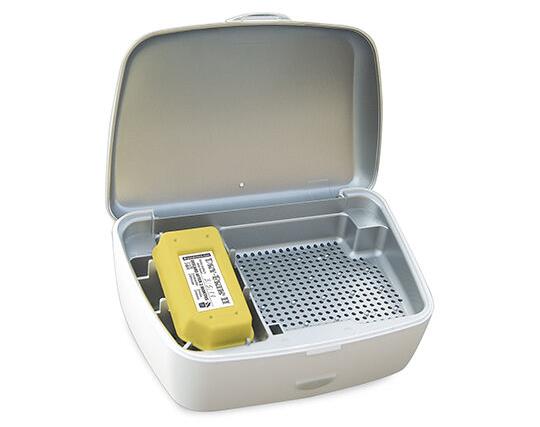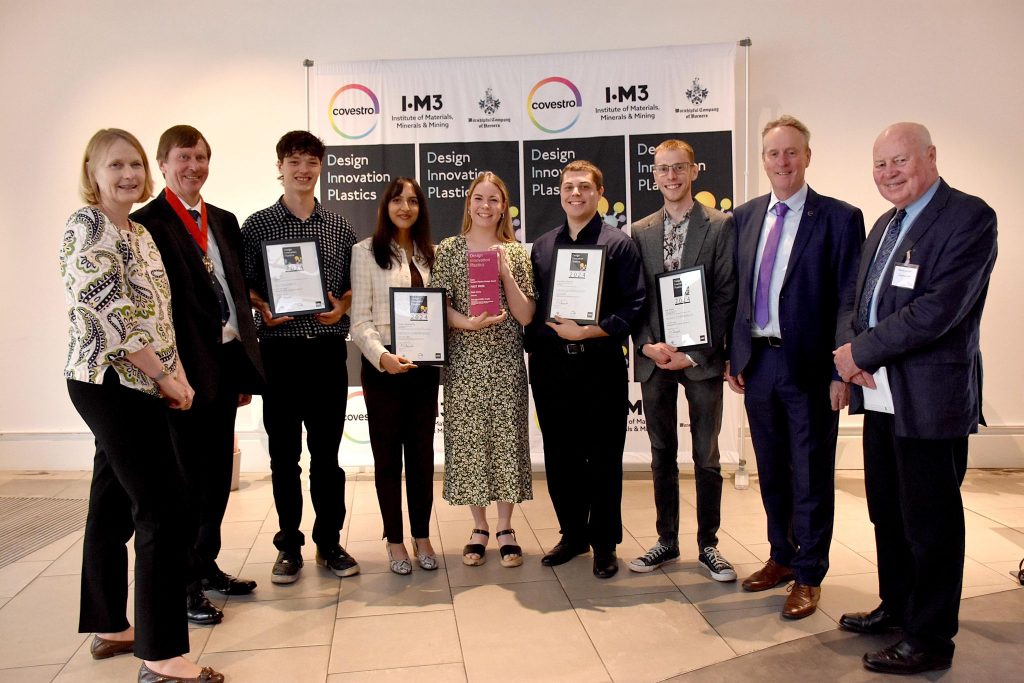EarBoost+ a new Drybox, my story and why I designed it.
Innovating with aids and equipment through user research and design is another way in which Cochlear Implant users can demonstrate the change they want to see and also influence others towards better design and access. We feature here – Gargi Agrawalla, a final year student at Loughborough University with a cochlear implant, shares her journey from facing the limitations of using a bulky dry box during her camp trip to designing a EarBoost+, lightweight and compact that dehumidifies cochlear implants while simultaneously charging their batteries. Read on to discover how Gargi’s personal experiences as a cochlear implant user and commitment to sustainability led her to explore as part of her design degree about how these issues could be addressed.
Please note that this project is being conduct entirely independently and is based solely on her personal experience with research and design development. This product is a prototype and not a commercial product and has not been tested with cochlear implants.
Dear CI community, how many of you have used this dry box every night provided by Cochlear Care? You might say, “Oh yes, I use it every night because it is important to maintain my cochlear implant sound quality!” to an audiologist. Now, let’s figure out if what you said is true.

One summer after A-Levels, I sat with my group of hearing friends to discuss plans for a five-day camping trip. As I listened to their remote camping plans, I wondered: What about electricity? Will the campsite have electricity? Then I blurted my questions loud, and they all looked at me in confusion. I explained that my cochlear implants need dehumidifying and charging overnight, which requires electricity. OHHHH RIGHT! OK, let’s find a spot near an electricity plug. While I felt appreciated for having lovely friends, I was embarrassed since I am dependent on electricity, and we cannot properly enjoy the remote natural environment’s beauty. So, we went ahead with the plan.
One day, I reached my friend’s place, where some of us divided our belongings between two cars. My luggage stood out as larger and heavier compared to theirs. Let’s go back to when I was packing with my mom. I was concerned about packing lightly and contemplated leaving behind my dry box and charger with long wire extension in favour of disposable batteries. However, my mom insisted that I take them to prevent any damage to my implants, stressing the importance and cost. I constantly worried about maintaining them properly as part of my daily routine.
The first day we arrived, the weather was drizzling and wet. We set up our tents and facilities. We took a rest and ate dinner. We then played fun card games, used torches, sang and told stories inside the tent. We set up our beds, and then this thought came to me: Should I wear my implants on overnight? Is it right to leave my drybox out? Even though the wire extension from electricity was there, I slept overnight for four nights with implants on, with disposable batteries.

Right Image: The left shows the dry box and charger provided by Cochlear Care, and the right shows my new design.
A dry box or charger did not bother me because the plug was far from my bed, and I was exhausted with listening fatigue. My instinct to be alert at night in an unfamiliar place also led me to this action. However, this action could be more damaging to CI care and maintenance, potentially reducing sound quality. Moisture can impact the device’s functionality and lead to malfunctions or damage over time. Therefore, dehumidification helps ensure the longevity and reliability of the cochlear implant. This has bothered me ever since. I felt deprived of independence to go somewhere very remote. What if I want to climb Mount Everest one day? Will my CI hold me back?
This became one of the motivating factors for me to study Product Design and Technology at Loughborough University to build skills to solve real-life user and design problems. Then I learnt of this Design Innovation in Plastics competition brief opportunity: Life Off-Grid; Independently Powered Product. I got so excited by it and worked relentlessly on it. It took me much research to ensure the uniqueness of my idea, and I realised a few things in the process:
Why did the Cochlear Service still use the same dry box launched in 2011? Where is the drive for innovation? It’s been more than a decade. We have come to a technology age and are moving to a sustainable future. Materials and Electronics are evolving quite fast, with materials becoming more durable and environmentally friendly and circuit boards becoming tinier and tinier for efficiency. What’s bizarre is that I still have a dry box and a charger with wires and plugs, which are so expensive, bulky, and heavy! Continuous use of disposable batteries alone lasts about a week as CI consumes much power and would impact the environment, too.
Hence, I designed EarBoost+, a lightweight, compact, sustainable, portable case that dehumidifies cochlear implants and charges their batteries at the same time. It is powered independently with integrated renewable energy sources such as Solar Power and Piezoelectricity, which embody future technology and ensure broader travel independence for the CI community. It prolongs durability and reduces electronic waste.

According to the World Health Organisation (WHO), there are concerns about the growing number of people becoming deaf globally, which will inevitably increase the hearing technology market in the future. Pushing the boundaries for a more sustainable hearing technology market means a lot to me. It also means a lot for me to get far in this national competition with a highly commendable prize as I can address the challenges faced by wearers of cochlear implants to live an active, off-grid life, camping and hiking with my design solution.

29 July 2024